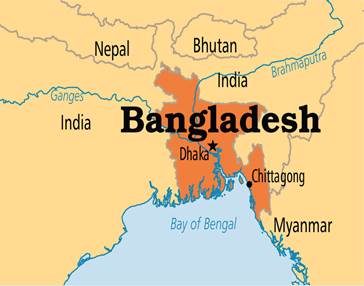|
We have another breakthrough
interconnection to report. India and Bangladesh have completed their first
cross-border high-voltage direct current (HVDC) link between these neighbor
nations. Bangladesh remains a developing nation with only a 41%
electrification rate. 95 million Bangladeshis remain in the dark. While India
is further along in development, 25% (288 million people) still have no power.
Linking their two systems helps both.
 Significant politically, connecting these former
rivals (Hindu vs. Muslim nations) provides a mutually beneficial trading
relationship that can expand over time. The exchange of power helps level loads
between time zones and seasonal variations. Significant politically, connecting these former
rivals (Hindu vs. Muslim nations) provides a mutually beneficial trading
relationship that can expand over time. The exchange of power helps level loads
between time zones and seasonal variations.
India also purchases power
from hydro-rich Nepal and Bhutan. It's a relatively short distance to extend
these transmission links between all four nations – increasing trade and raising
living standards throughout the South Asia region.
The Asia Development Bank
helped to fund the project and stated, "expanding supply will help
businesses and improve the delivery of essential services like education and
healthcare." Basic lighting and refrigeration require electricity.
One of GENI's interns from
India, Farhan Beg, just finished his research on "Connecting the Supergrid
in South Asia" which would use HVDC to link all six nations: India,
Bangladesh, Nepal, Bhutan, Pakistan and Sri Lanka. The continent is blessed
with abundant solar, hydropower and wind – and this Supergrid will enable all
nations to access cleaner energy together ... more power, less pollution.
When
you visit South Asia you experience the rich culture, languages and history.
At the same time you can see deep poverty that can be upgraded by access to
electricity. These international linkages are not easy – requiring technical
and economic justification before policy-makers shake hands. We are encouraged
with this new link, as it will catalyze more cooperation in the region. Please
share, like and link this important breakthrough.
In Partnership for the Planet,
|



